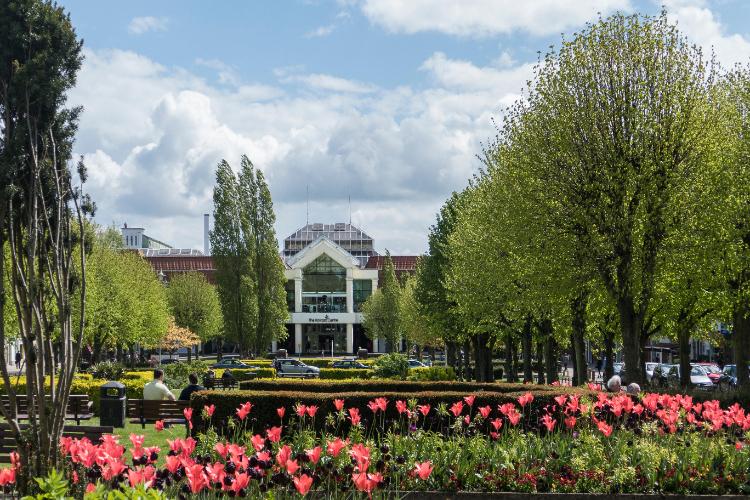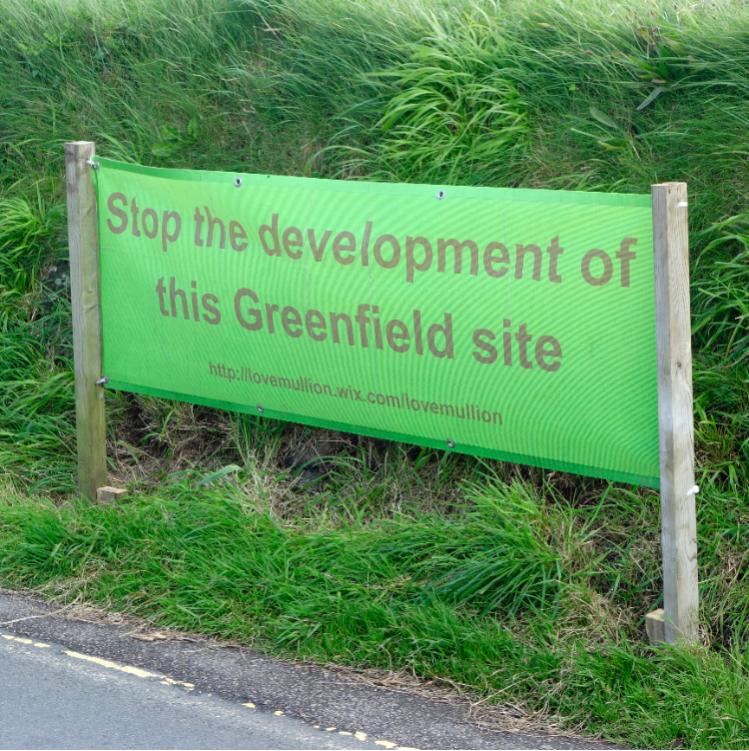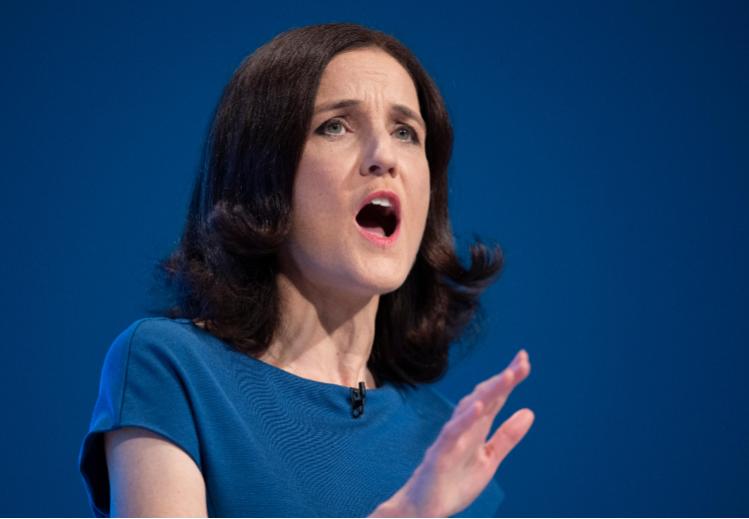Can we build beautifully and affordably?
Building beautiful (Credit: Tracy Worrall)
10 min read
In 2019, a petition on the parliamentary site entitled “Stop councils being forced to build twice the number of houses we need” emerged online. The summary of the petition ran: “We need new houses, but we want affordable new developments to fit into local infrastructure, to help build a sense of community and pride. The countryside is being swamped by huge housing developments. Small rural villages turned into suburbs, through ugly big out-of-town satellite developments.”
The petition didn’t receive a government response – but only because several other petitions were already in existence, all making similar arguments: stop building ugly housing developments on our doorsteps.
They are products of a national housing debate that is proving difficult to settle: how can we build housing that is both beautiful and affordable?
Designing aesthetically pleasing housing at an affordable price is no new challenge. During the Industrial Revolution, cities were becoming polluted and increasingly unhealthy places to live. At the same time, people in rural areas were suffering from feelings of social isolation after an exodus of workers had flocked to cities for job opportunities. “The country was not working for most people,” says Katy Lock, a director at the Town and Country Planning Association.
As a result, the garden city movement evolved to provide people with well-designed and affordable homes that would make them feel better connected to both nature and the surrounding community. “In design terms, there are lots of lessons from the new towns and garden cities for the design of places today,” says Lock. “In terms of being really forward thinking [about] green infrastructure and making sure places are walkable and cyclable. The whole concept of 20-minute neighbourhoods, the foundations of that, is all in the garden city movement.”
 Welwyn Garden City (Credit: Rolf Richardson / Alamy Stock Photo)
Welwyn Garden City (Credit: Rolf Richardson / Alamy Stock Photo)
While beauty is generally considered to be in the eye of the beholder, some have argued that sound housing design is anything but. Nicholas Boys Smith is founding director of Create Streets, a social enterprise that researches links between housing and wellbeing. “Our core point would be that good design is not subjective. There are very predictable relationships between place and human outcome. That is not to say that you or I, or anyone else are a robot completely determined by your environmental landscape… but you are heavily influenced by it.”
When it comes to house design, some architectural styles are seen as better than others. John Hayes is the Conservative MP for South Holland and The Deepings, and also acted as adviser to the Building Better, Building Beautiful Commission, whose Living With Beauty report proposes a new development framework asking for beauty, refusing ugliness and promoting stewardship.
“Much of what has been built in my lifetime – much, not all – but much would be better demolished,” he says. “Sadly, modernists have encouraged the views that function was more important than form, in fact worse still it neglected form altogether.”
We have built places that have a dull ubiquity – they look the same whether you are in Penzance or Penrith
Even today, housebuilders are favouring function over form, says Hayes, as he calls for an “aesthetic revival” in the way we build homes. “We have built places that have a dull ubiquity – they look the same whether you are in Penzance or Penrith,” he says. “There is no vernacular, no use of local materials, no reference to the prevailing requirements, no connection to the landscape, they are out of scale with the existing size of settlements – it is appalling.”
Building in a beautiful way is achievable, Hayes continues; we can see the evidence for ourselves. He points to almshouses, traditionally built for people in dire economic straits, or to the Progress Estate in Woolwich, developed by the Royal Arsenal Co-operative Society to house munitions factory workers during the First World War.
If evidence suggests we can build beautifully and affordably, why are we failing to do so?
Sam Dumitriu, head of policy at campaign group Britain Remade, suggests our planning system is to blame. “At the moment, the housing market is selected for developers who are good at persuading the public or council officials to allow them to use that land to build as many homes as possible on it – that is where their incentives lie,” he says. “Market forces are not pushing you to build the most attractive homes, necessarily. So, anything that [developers] are investing in navigating the planning system is probably not going to be invested in building a higher quality home.”
The housing market, Dumitriu goes on to say, is particularly volatile for smaller developers because there is too much uncertainty that a development will be rejected in the final stages of the planning process. “If you are a small house builder, you cannot actually stay afloat,” he says, “because if you only have one project and you know development gets shut down for whatever reason, you are essentially sitting on all your assets idle, sitting on the land that you’ve borrowed money to acquire idle again, and as a result, you are at risk of being wiped out.” A lack of smaller developers in the market eases the competition for larger outfits, Dumitriu says, leading to the type of “classic Barrett box” we see in developments around the country today.
The consequences of building this type of “red brick, monolithic” housing, as champion of urban design Lord Vaizey describes it, can be severe. Home ownership has been decreasing over recent years, with an English Housing Survey, published in 2022, revealing one in five people in England and Wales rent from a private landlord. This is at odds with the 76 per cent of people, surveyed by YouGov in 2021, that want to own their own home.
 Development protest banner (Credit: ATStockFoto / Alamy Stock Photo)
Development protest banner (Credit: ATStockFoto / Alamy Stock Photo)
Recent research from the think tank Centre for Cities revealed that the United Kingdom has a housing deficit of 4.3 million homes. But there is a wariness towards housebuilding in general: with two per cent of people surveyed in a 2019 YouGov survey trusting developers to act honestly, and seven per cent trusting local authorities when it comes to planning for large-scale development.
“That is quite a new phenomenon in historical terms, which you could get quite depressed about, that essentially we do not want new development; we think it will make places worse,” says Boys Smith. “That was not what we used to think 70 years ago, we didn’t use to think that 100 years ago, we do think it now, and ultimately, that has to change.”
The Conservative 2019 manifesto recognised a need to rebalance the housing market more towards home ownership, and recommitted to a mandatory target of 300,000 homes to be built a year, a figure that has been in circulation since the 1950s.
Building more housing of any value can have benefits for all, even those seeking affordable housing, Dumitriu says. “If you build more homes at the top of the market, those filter downward and you see rent reductions towards the bottom of the market,” he explains. Crucially, all new developments are required to deliver a percentage of affordable housing – in London that starts at 35 per cent, but rises to 50 per cent in some locations.
In November, Michael Gove, the Secretary of State for Levelling Up, Housing and Communities backed down on key reforms to the Levelling Up and Regeneration Bill, after former environment secretary Theresa Villiers gathered 56 Conservative backers to amendments she had filed.
Villiers’ amendments would make mandatory housing targets advisable – emboldening local councils to reject development plans and to ban greenfield development.
This is a case of politicians “tending to side” with the louder voice in the housing debate, Dumitriu says – in this case, the people around the country responding negatively to the planning consultations that may lead to more housing being built.
“You do not want this sort of political boom and bust cycle,” he explains. “You need to make sure that these policies can last. And sometimes when you try to push hard, as we saw with the [former prime minister] Johnson administration’s attempt to reform the planning system, you can create a backlash, which actually leads to increased restrictions.”
 Theresa Villiers (Credit: Russell Hart / Alamy Stock Photo)
Theresa Villiers (Credit: Russell Hart / Alamy Stock Photo)
Having 11 housing ministers in 11 years could also be contributing to unrest in our planning system, adds Lord Vaizey. “I think what would improve matters is if we have someone who was in for five or six years, or four or five years and was prepared to accept that good design and good planning are things worth fighting for.”
While the quantity of houses to be built may have been dialled back, there are indications that the quality of the houses we are building is being prioritised. In 2012, there were 24 mentions of “good design” in the National Policy Planning Framework (NPPF), but in 2021, there were 53. Specifically, the 2021 NPPF recommends that strategic policy-making authorities “ensure that appropriate tools such as masterplans and design guides or codes are used to secure a variety of well-designed and beautiful homes to meet the needs of different groups in the community.”
A series of pilot schemes are already under way, where local authorities are building models of what good design looks like for their specific area. “Every local version will have a design guide, and every developer will be charted against that design guide. That is where we want to get to,” explains Hayes.
Create Streets have gone further to turn this design framework into a reality, says Boys Smith. “We are trying to help councils and landowners to take advantage of the improving situation and the opportunities they now have to make a clearer quality ask,” he says. In 2020, Create Streets wrote Surrey County Council’s new street design guide and have just written a series of design code and house pattern types for infill housing in Chesham.
People are aesthetic creatures, and they need to touch and see and enjoy beauty. That is as true of working-class people as it is of privileged people
But building beautifully can go beyond the aesthetic façade of a house, says Dumitriu. As well as design codes, we could insist on imposing environmental specifications to promote affordability. For example, demanding higher standards of insulation or having heat pumps built into a property may help homeowners save money on their energy bills.
The task of building beautifully and affordably may be significant for developers going forwards. However, for Hayes, returning to the basics of the housing dilemma is a way of cutting through the noise.
“First question is, do we need more housing? The answer to that is yes, but not at any cost. As someone said, ‘if you have not got a house, any house is better than no house’. That is just not good enough. We must not let the pressure of housing demand dilute the quality of what we do,” he says.
“People are aesthetic creatures, and they need to touch and see and enjoy beauty. That is as true of working-class people as it is of privileged people,” Hayes concludes, asking, “Why should beauty be the preserve of the privileged?”
